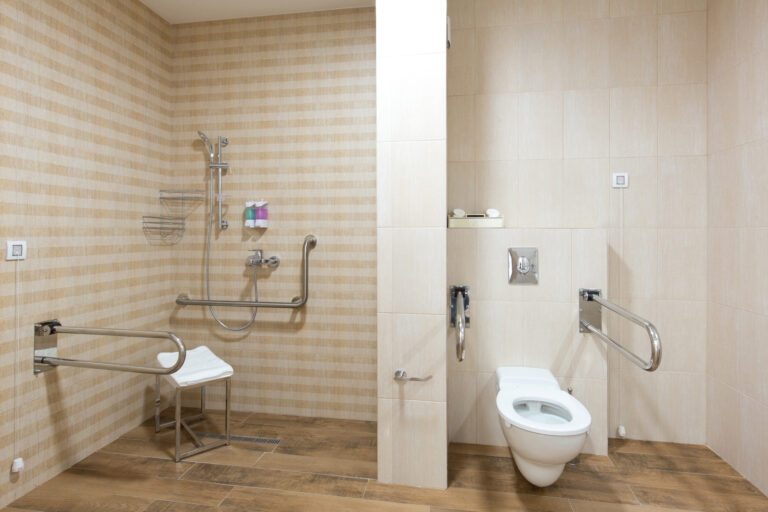Electric blankets are a common way to stay warm, especially for older adults and those with health conditions that make them feel cold more often. For people living with Alzheimer’s disease or other forms of dementia, feeling cold is a frequent problem because the brain’s ability to regulate body temperature can become impaired[1]. This raises an important question: Is it safe for Alzheimer’s patients to use electric blankets? To answer this, we need to look at the risks, benefits, and practical steps caregivers can take to keep their loved ones both warm and safe.
## Why Do People With Alzheimer’s Feel Cold?
Alzheimer’s disease affects the brain in many ways, including the parts that control body temperature. The hypothalamus, which acts like the body’s thermostat, can become damaged as dementia progresses[1]. This means a person with Alzheimer’s might not realize they are cold, or they might not dress appropriately for the weather. Their body may also have trouble shivering or sweating, which are natural ways to stay warm or cool down[1]. Some medications used to treat dementia can make these problems worse, and being less active can also reduce the body’s ability to generate heat[1]. All of these factors mean that caregivers need to pay extra attention to keeping the person warm, especially in colder months.
## Are Electric Blankets Safe for Alzheimer’s Patients?
Electric blankets can be a helpful tool for keeping someone with Alzheimer’s warm, but they come with important safety considerations. The main concern is the risk of burns or overheating, especially if the person cannot communicate discomfort or has trouble moving away from the heat source. People with advanced dementia may not be able to tell if the blanket is too hot, or they might forget to turn it off. This is why close supervision is essential when using electric blankets for someone with Alzheimer’s[1].
Some beds designed for people with dementia, such as adjustable beds, are compatible with electric blankets, but this does not eliminate the need for careful monitoring[3]. Caregivers should check the blanket regularly to make sure it is not too hot and that the controls are easy for the person to use, if they are able to use them at all. It is also important to follow the manufacturer’s instructions and never use an electric blanket that is damaged or old.
## Alternatives to Electric Blankets
If an electric blanket seems too risky, there are other ways to help an Alzheimer’s patient stay warm. Layering clothing, using wool or fleece blankets, and keeping the room at a steady, comfortable temperature (between 18–21°C is often recommended)[2] can all help. Microwavable heat packs, hot water bottles (used with caution to avoid burns), and heated socks are other options[1]. Warm drinks and regular movement can also help the body generate heat.
## Practical Tips for Caregivers
Caregivers play a crucial role in keeping someone with Alzheimer’s safe and comfortable. Here are some practical steps:
– **Monitor the Environment:** Keep an eye on the room temperature and adjust heating as needed. Radiator reflectors can help direct heat into the room[2].
– **Dress Appropriately:** Use layers of clothing and blankets that trap heat, such as wool or fleece[1].
– **Check for Discomfort:** Regularly ask the person if they are comfortable, and look for signs of being too cold or too hot, such as shivering or sweating.
– **Use Technology Wisely:** Consider using a heated blanket with a timer or automatic shut-off feature, and always supervise its use.
– **Emergency Preparedness:** Keep emergency supplies on hand, such as a torch and extra blankets, in case of power outages[2].
– **Consult a Doctor:** If the person is always feeling cold, or if you notice changes in their ability to regulate temperature, talk to a healthcare professional. There may be underlying medical issues that need attention[1].
## When to Seek Medical Help
Persistent feelings of coldness, especially if accompanied by confusion, lethargy, or changes in behavior, should prompt a visit to the doctor[6]. These symptoms could be signs of hypothermia or other medical conditions that need treatment. In some cases, thyroid problems or infections can also cause a person to feel cold, so a thorough medical evaluation is important[4].
## The Bigger Picture: Safety and Independence
Keeping someone with Alzheimer’s warm is about more than comfort—it’s about safety and quality of life. Caregivers should balance the need for warmth with the risks of heating devices. Simple changes, like maintaining routines, using visual cues, and creating a calm environment, can also help reduce stress and confusion for the person with dementia[5]. Assistive technology, such as smart home devices, can provide additional safety, but nothing replaces the watchful eye of a caring person.
## Final Thoughts
Electric blankets can be used safely for Alzheimer’s patients if caregivers take the right precautions. The key is close supervision, choosing the right products, and being aware of the person’s ability to sense and communicate discomfort. Alternatives like layered clothing, room heaters, and non-electric warming devices are also effective and may be safer in some cases. Always consult with a healthcare professional if you have concerns about temperature regulation or the safety of heating devices for someone with dementia[1][2][6].
Sources: [1][2][3]





